Tu-22M3 - aircraft carrier thunderstorm
In 1986, two aircraft from the 2nd Marine Missile Aviation Division of the Black Sea fleet during joint exercises in Bulgaria, imperceptibly for NATO aircraft, they immediately crossed two borders of the states that were part of this military bloc. The training of the crews was carried out as part of the joint exercises of the Warsaw Pact.
The most interesting thing was that the two Tu-22M, equipped with missiles to destroy aircraft carrier groups in the Mediterranean, changed their course by 13 degrees and “checked” the two borders with Turkey and Greece, after which they safely returned back to Bulgaria. Already after this flight, the pilots told that in the area of the village of Drama in Greece there was an attempt to intercept them with F-15 fighters. Crews could even visually see NATO planes. But the interceptors were in a train that was significantly higher than the Soviet cars that flew below the mountains. They remained invisible to foreign pilots, who couldn’t even imagine that heavy missile carriers flew at a low altitude between the mountains. Soviet pilots did jewelry work.
In those years, Soviet long-range aviation flew a large number of flights, including over enemy aircraft carriers. The Tu-22М2, Т-22М3 and Tu-95МР missile pilots photographed American aircraft carriers in 1985: Enterprise, Midway, Coral-X. Aircraft removed aircraft carriers, making the passage above their deck at a height of 1000 meters. As a rule, American fighter "Tomcat" F-14 hung under the hatches of aerial cameras, but they still took everything in pictures: fighter, ships, and even waves.
The TU-22М3 pilot Nikolai Baranov spoke on the pages of the Zvezda TV channel about an interesting flight, when the Tu-22М3 bomber simulated a landing on the deck of an aircraft carrier. A pair of Soviet aircraft - on the slave two X-22 missiles designed to destroy aircraft carriers and other ships, and on the lead two X-28 with passive seeker to destroy ship and land radars - met an American carrier-based fighter over the sea. This meeting prompted the pilots that the carrier group was not far away. The commander of the lead Tu-22М3 decided to test in practice the tactics of the likely enemy, as well as to take off the aircraft on the deck of the aircraft carrier. Detecting an enemy carrier group in the Sea of Japan and revealing its air defense system was a rather difficult task. The Americans well disguised such groups "in the shade" of numerous islands, so even from the air using radar they were quite difficult to detect, besides working radars allow ships to quickly detect aircraft and prepare for them a decent meeting.
Despite this, our pilots, having proved their professionalism, were able, until the last moment, without finding themselves, to find the aircraft carrier of the enemy. After that, the fighters took off to intercept them. One of them flew so close that you could see the smile on the face of the American pilot. He winked at the commander and showed the belly of his plane with air-to-air missiles. On this, the Soviet missile submarines turned their twin gun installations. It would seem that this “exchange of courtesies” will end, but the American pilot decided to joke. With a smile on his face, he began to offer the Soviet missile carriers to board the aircraft carrier. At this time, there was a multipurpose Kitty Hawk downstairs, on the deck of which were anti-submarine aircraft, fighters, and reconnaissance aircraft — flights were conducted.
It is worth noting that the Tu-22М3 is not a small car. The wingspan of the aircraft is about 35 meters, almost the width of the deck of the aircraft carrier. Yes, and the fuel on board - under 50 tons. At the same time, two American fighters cannot fly to the beginning of the runway, in a hurry one simply blocked the other. Most likely, the fuss arose after the Soviet Tu-22М3 appeared on the horizon. However, the F / A-18, which accompanies our cars and sets under the camera, makes it difficult to take high-quality pictures of the organization of flights. Therefore, the Soviet pilots also decide to "joke" and begin to imitate landing on the deck.
As it should be in real landing, landing gear and flaps are produced, the plane is reduced. Imitation or not, it is difficult to understand if you are not in the cockpit of an enormous missile carrier landed on the deck. Americans have already begun to imagine what would happen if such a machine would land on the deck. The Tu-22М3 would simply demolish all the planes and people from the deck, damage the superstructure and command post. And a fire from a collision with tons of kerosene and two powerful rockets onboard the 50, each of which weighs 5 tons, would have to be put out for days. Imitation landing failed. Considering the photographs taken later, it was possible to examine the panic that arose on board the aircraft carrier. In fairness it should be noted that this story more like an army bike. And in the network you can find another version of it, in which Tu-95 airplanes appear. The pictures taken from the aircraft are not declassified, as the names of the pilots performing this approach are unknown.
It is worth noting that the practice of flying combat ships continues to be carried out. For example, on October 17 of the 2000, another 4 Russian aircraft participated in the flyover of another American aircraft carrier of the Kitty Hawk type: two Su-24MR reconnaissance aircraft and two Su-27 fighter-interceptor fighters from the 11 Army of the Air Force and Air Defense. These events took place in the Korean Strait, Colonel-General Anatoly Nagovitsyn, the former deputy chief of the General Staff of the Russian Armed Forces, told journalists about them. According to him, the meeting of American carrier-based aircraft with Russian fighters was “as close to combat as possible.”
It should be noted that at that time the Americans conducted their naval maneuvers only 300 km from the Russian coast, which in itself could not be regarded as an act friendly to our country. Therefore, the actions of Russian aviation were legitimate and fully justified. The results of the aerial reconnaissance were excellent. Russian reconnaissance aircraft Su-24MR made several visits to an aircraft carrier, photographing it from the air. The photographs showed a panic on board the ship: the sailors even hurriedly chopped the hoses that connected the aircraft carrier to the supply tanker, which pumped fuel onto its board.
American F / A-18 fighters were able to ascend into the sky only after the second call, however, the Su-27 quickly took them away from the ship, making a diversion that allowed the Su-24MR to perform several more spans over the American ship. As it was said later, some time later, a letter arrived to the aircraft carrier, in which there were two photos of the deck of the ship, taken from the Russian aircraft. It is worth noting that naval aircraft of the United States and Russia quite often carry out overflights of warships that are in neutral waters. For this reason, the actions of the quartet of Russian aircraft while circling an aircraft carrier of the “Kitty Hawk” type did not cause any negative reaction from the US official administration.
Today in the combat training plans of naval pilots there is a section that is devoted to working out various techniques for overcoming the air defense of enemy ships. Riding excellence is considered to overcome a powerful air defense system of the American aircraft carrier group. This happens very rarely - it is worth paying tribute to the Americans, who are very competently building the protection of their aircraft carrier. But, as they say, the old woman is proruha.
Tu-22M3
The Tu-22М3 (according to NATO codification Backfire-C) is a long-range supersonic bomber-carrying bomber with a variable wing geometry. According to its layout and design scheme, the Tu-22М3 is an all-metal low-profile with two turbofans, which are located in the rear part of the fuselage. The aircraft is distinguished by the presence of a variable sweep wing and an arrow tail. Tu-22М3 has a three-bearing chassis with a front support column. Titan and aluminum alloys, heat-resistant and high-strength steels, as well as non-metallic structural materials are widely used in the construction of the airframe of the aircraft. In service with the Russian Air Force is about 40 ready to fly this type of aircraft. At the same time, before 2020, a modernization of the 30 Tu-22М3 is planned for KAPO.
This is a modification of the Tu-22М3М aircraft, which is distinguished by its updated avionics and communication facilities. At the same time, there is an onboard equipment complex onboard the aircraft - the digital specialized computing subsystem SVP-24-22 (developed and manufactured by JSC Gefest and T). This system is able to provide a single plane guidance to the target with the re-targeting already in flight, as well as a group attack of the target by rocket carriers of the compound from various arbitrary directions. Airborne equipment on the new element base expands the range of weapons used by the aircraft and allows the use of modern high-precision samples weapons. Among other things, a complex of works is carried out to extend the life of the aircraft to 40 years. Detailed information on the work carried out as part of the modernization of the Tu-22М3М is closed. The Tu-22M3M aircraft was adopted by the Russian Air Force 4 July 2014.
Supersonic bomber Tu-22М3 is able to fly at speeds up to 2300 km / h at a distance of up to 7000 km. Maximum combat load - 24 000 kg, normal - 12 000 kg. The main weapon of the aircraft are the X-22 cruise missiles and the X-15 aeroballistic missiles. The aircraft is able to carry up to 3's of X-22М guided anti-ship missiles with a maximum speed of 3700 km / h and a range of up to 480 km. The X-15 tactical airballistic missile attack aircraft can carry up to 10 units. Six of them are in a special drum PU inside the fuselage, and another four on the wing nodes of the suspension (2x2). The purpose of this rocket is the defeat of stationary area targets - air force and air defense bases, radar stations, command posts, military industrial facilities. A hypersonic rocket develops speed up to 5М in flight and is able to hit targets at a distance of 60-300 km.
At present, Russia is testing new X-32 rocket. The development of the rocket, which was intended to replace the X-22, began as early as 1980 in the ICD Raduga. Structurally, the rocket is made according to the normal aerodynamic configuration and is completely similar to the prototype X-22. The range of these missiles was brought to 1000 km. And the flight speed according to information from various sources ranges from 4000 km / h to 5400 km / h. The warhead of the new anti-ship missile is smarter than its predecessor, it is able to identify the target itself, selecting the most important one. Due to the high speed of the flight to intercept this rocket is very difficult. According to the Zvezda TV channel, the rocket is able to withstand a line of Vulcan-Phalanks 20 anti-aircraft artillery system, hit by one Sparrow AIM-7 rocket or 2-3 Rocket of the AID-9 Rocket.
TU-22М3 is often called in the press "aircraft carrier killer", but to say so is not entirely correct. One aircraft of this type against full-fledged AUG, the fight against which its main purpose, is not a warrior. It would be more correct to call a group of similar machines a killer of aircraft carriers. The use of Tu-22М3 missile carriers for AUG-type targets presupposes the operation of a large group of vehicles up to a full-fledged regiment according to various schemes - from the usual frontal impact from one direction to diluting the aircraft into three groups, aligning them in two waves in range already launched anti-aircraft missiles. The distribution of targets in the warrant between cruise missiles was carried out by aircraft operators in coordination with the leading aircraft. At the same time, in the strike against the carrier group, aircraft were used not only with X-22М, but also X-22MP (anti-radar) missiles. With the defeat of a potential enemy aircraft carrier (permanently shut down or sinking), the task of the aviation group was considered completed.
Information sources:
http://tvzvezda.ru/news/forces/content/201503071024-tvq5.htm
http://www.airwar.ru/enc/bomber/tu22m3.html
http://militaryrussia.ru/blog/topic-258.html
http://ruskline.ru/monitoring_smi/2009/06/02/faktor_x-32_dal_nobojnaya_asimmetriya
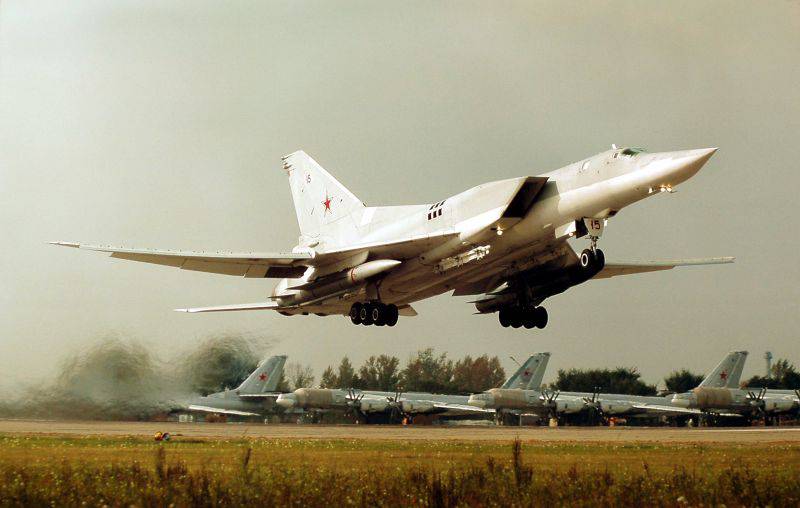
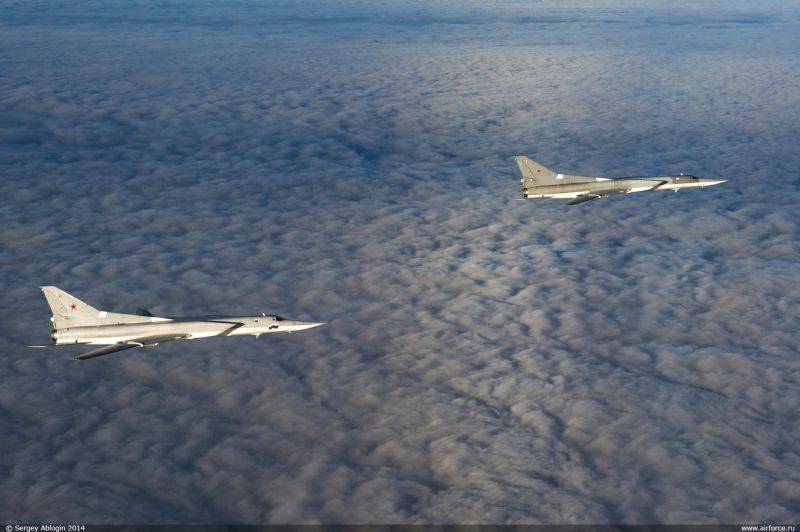
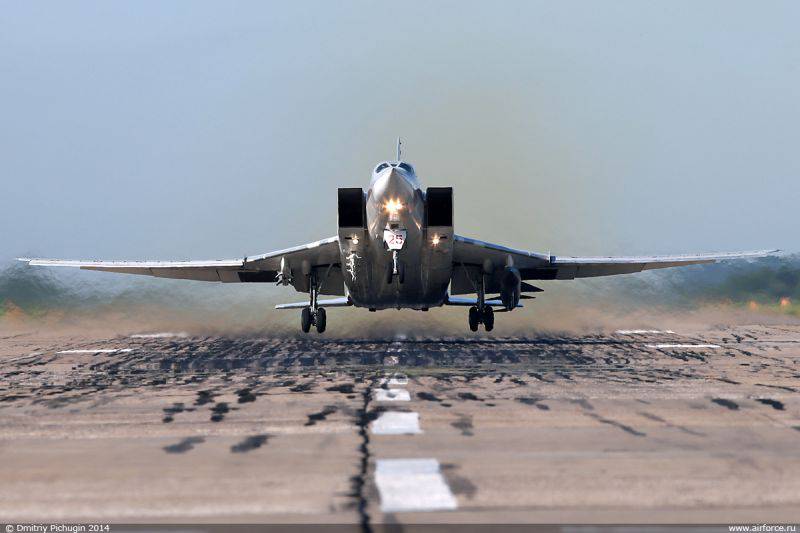
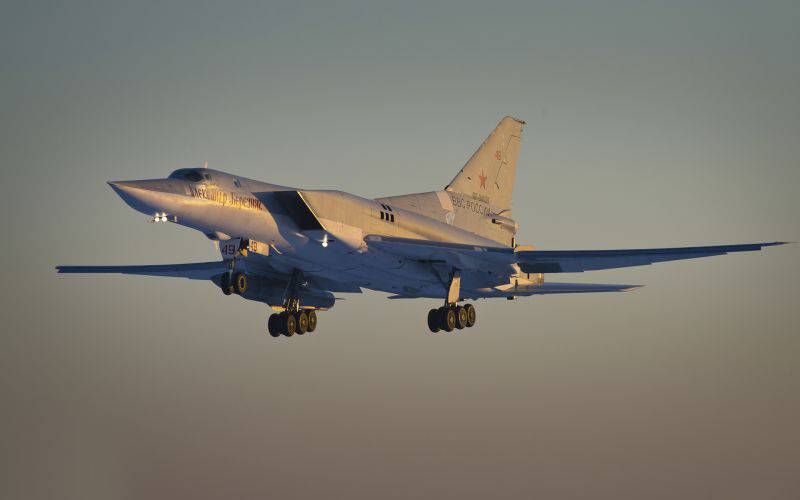
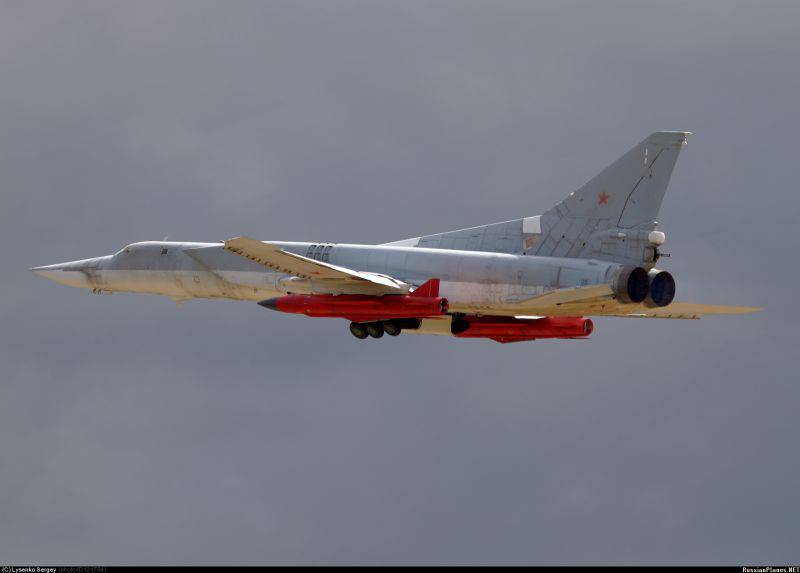
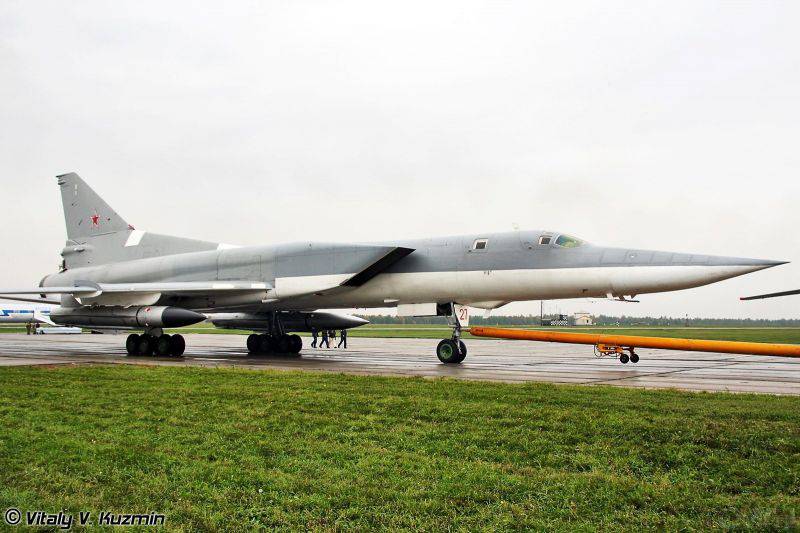
Information